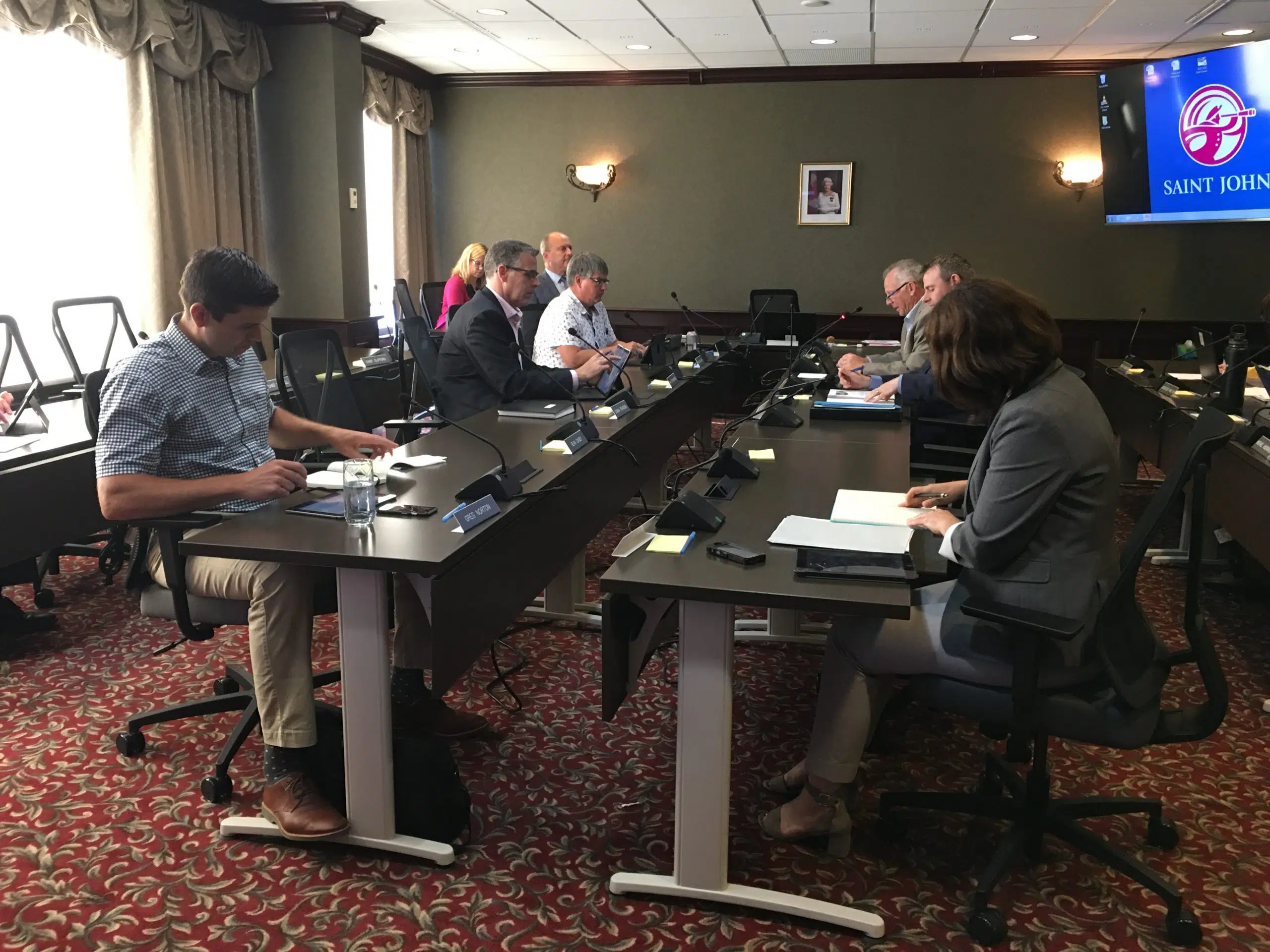
Members of Saint John's finance committee meet on July 18, 2019. (Brad Perry/Wave News)
Another $9 million a year in revenue would be “transformational” for Saint John, according to city staff.
They outlined a proposal during Thursday’s finance committee meeting to keep the provincial portion of heavy industry property tax collected in the city.
Neil Jacobsen, the deputy city manager, said the proposal would address a “clear inequity” around the distribution of municipal industrial tax revenue in New Brunswick.
“It does not create any immediate new taxes or any new or incremental tax burden for large industry,” said Jacobsen.
“It contributes in a significant way to addressing the city’s pending 2021 fiscal cliff and growing structural deficit.”
Jacobsen said Saint John has the province’s highest concentration of heavy industrial activities but only receives a fraction of the property taxes which are collected.
Saint John currently gets about $12 million each year with another $9 million going to the provincial coffers.
Proposal Discussed By Working Group
The proposal was discussed by a working group looking at Saint John’s financial sustainability, Jacobsen said, but was not included in their final report released in early July.
One of the action items does call for a “comprehensive review” of local government property tax policy and any new property tax-related tools to benefit local governments.
Jacobsen said the proposal would be an interim step in the more comprehensive review of municipal taxation and provide immediate help as they implement recommendations from the financial sustainability report.
Coun. David Merrithew, who chairs the finance committee, said $9 million would have little impact on provincial revenue but would be “so significant” for the city.
“I think we deserve it, I think it’s a proper and reasonable ask, and I believe it could be the first part of municipal tax reform,” Merrithew said.
Staff also suggested a similar approach could be implemented for other municipalities which have heavy industrial operations. They estimated the total impact on the province would be less than $20 million a year.
Committee members voted to send the presentation to local MLAs and the premier’s office.




